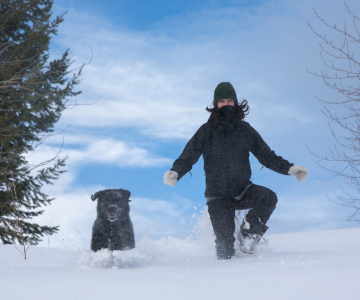Parents of school-aged children can contact their local health unit for information about their child's health.
On this page, you will find information to protect and promote the health and safety of school-aged children.
We want to help create healthy schools. After all, a healthy school contributes to the safety and health of our children, our youth…our future! By working together, we can create the healthiest schools possible.

Parents of school-aged children can contact their local health unit for information about their child's health.
On this page, you will find information to protect and promote the health and safety of school-aged children.
Healthy habits lead to good dental health.
Surveys are provided to all kindergarten children every three years for surveillance purposes.
A student may experience a dental emergency, such as an accident or a severe toothache, while at school that requires immediate intervention.
Videos and other teaching resources are available online to teachers, counselors and public health nurses to assist in teaching about good dental and oral health practices.
Head lice can affect anyone. Head lice are annoying and may cause itching, but they do not transmit or cause disease. Children and adults’ reactions to head lice can subject children to teasing, bullying and isolation. Reactions to head lice can significantly interfere with a child’s emotional well-being, social status in the classroom and ability to learn. For these reasons, head lice infestations should be treated.
The primary responsibility for control of head lice rests with the family and community.
Public health nurses can answer questions about the management of head lice.
If a child has head lice they can continue to have contact with others for the remainder of the day. The parents need to be told so that they can begin treatment as soon as possible.
If there are problems with the treatment, parents are encouraged to consult a public health nurse for information and resources.
If these are not effective or if you need more information, contact your local health unit.
Health promotion is the process of helping people to make healthy lifestyle choices and motivating them to become better managers of their own health. School-based or school-linked health promotion, called Comprehensive School Health, is increasingly recognized as an effective way to coordinate efforts that promote health and prevent disease or other problems.
A Comprehensive School Health approach encourages people to think broadly across all sectors that make up their school or school district, and to develop a coordinated, whole school approach to planning, decision-making and program delivery.
In some cases a school setting helps to establish healthier outcomes for its attending students. This includes elements such as the social and physical environments, school policies, support services, and the education/curriculum.
Promoting healthy lifestyle choices
Other Resources
Early detection of hearing loss, followed by early and comprehensive intervention, makes a significant difference to the quality of life for the individual, their family and the community. Visit the Hearing Health section of our Children & Youth page to learn more.
As children get older, the protection from childhood vaccines can wear off. Children are also at risk of new disease as they enter their pre-teen years. That’s why they need vaccinations too.
Schools can work with students, parents, and other community partners to develop and implement written policies regarding unintentional injury, violence and suicide prevention.
The BC Injury Research and Prevention Unit suggests learning to take safe risks by:
Using proper safety equipment, such as helmets, seat belts and mouthguards for sport activities
Educating ourselves and children about safety aspects of activities, such as poison prevention and water safety for swimmers.
Connecting with injury prevention groups in our communities.
Reducing the opportunity for injuries to occur through safe playgrounds, education about safe behaviors, supervised physical education and sports activities, young driver education, use of bike paths, training for teens as new employees at work sites.
Minimizing harm in injury situations by proper use of helmets, seat belts, airbags, sunscreen, community first aid training, accessible and available emergency response, MedicAlert bracelets (open in Chrome), and knowledge of universal (standard) precautions.
Injuries can also be intentional, as a result of violence and suicide.
Students spend more time in school than in almost any other environment. Having access to nutritious food at school and the opportunity to engage in positive food experiences helps students develop positive eating attitudes, behaviours, and skills that support lifelong well-being.
Visit our Nutrition & Food Security page for more information.
Children and youth are encouraged to live an active lifestyle with a daily balance of sleep, sedentary behaviours, and physical activities. Regular physical activity keeps the body strong and healthy and can improve mental health, school performance, sleep, and energy levels. Children and youth should aim for a total of 60 minutes per day of moderate to vigorous physical activity. The key is to find an activity you enjoy, and gradually build up your activity levels until you meet the recommendations. The most important point to remember is any amount of physical activity is beneficial.
For more information on physical activity for children and youth see these resources:
Active school travel includes walking, cycling, wheeling, or any other form of person-powered movement on the way to or from school. There are many benefits to active travel including:
Activities to consider if the distance between home and school is too great:
Active school travel resources
View trusted sources of information for teachers, parents and children on puberty, sexual reproduction, understanding your body and more:
Like all indoor environments, schools can have high levels of radon. Since radon is an invisible, odourless, radioactive gas, it can go undetected– unless the air is tested for radon. Radon is released from the natural breakdown of uranium found in soils and rocks, which is common within our region. Although radon is natural, it can build up inside buildings and become harmful to the health of students and staff.
Health Canada indicates that long-term exposure to radon is the leading cause of lung cancer for non-smokers. Because of the amount of time that children spend at school, radon should be tested for and actions taken to reduce the amount of radon exposure.
BCCDC Radon Testing Protocol for Schools
Radon Testing Information Letter for school staff, parents and students
Radon exposure is particularly concerning for young children with developing lungs and a high breathing rate. The only way to determine indoor levels of radon is to test. Testing is easy and per Health Canada guidance should be conducted during the cold season for a period of 91 days.
For these reasons, our Medical Health Officers ask that all schools be tested for radon. To protect the health of students and staff, schools and school districts should include radon testing in their routine indoor air quality maintenance programs and educate students about the risks associated with high levels of radon.
School-age children may have trouble learning and developing socially if they don't get enough sleep. The Canadian 24-Hour Movement Guidelines for Children and Youth (ages 5-17 years) recommends:
Resources
devices can be concealed, and the addictive drugs like nicotine that they can contain. Cannabis use can also have detrimental impacts on youth brain development and mental health outcomes.
Legislation is a key tool in reducing tobacco, cannabis and vapour product use and protecting youth from accessing tobacco, cannabis and vapour products. All public and private kindergarten to Grade 12 schools in B.C. are tobacco, cannabis and vape-free under the Tobacco and Vapour Products Control Act and Regulation, and the Cannabis Control and Licensing Act. This ban extends to all school property 24 hours a day, seven days a week, regardless of whether or not school is in session. The ban also includes vehicles, parking lots, sports fields, driveways, courtyards and private vehicles parked on school property.
Visit our Tobacco & Vaping page, or our Cannabis page for more information.
Our Toolkit – Vaping School Properties provides resources to school district staff and others who are working to address the use of vapour products among youth.
School compliance information is available to advise both public and private schools of their responsibilities for showing reasonable care and diligence with the Tobacco and Vapour Products Control Act.
The following resources are also available:
Since a child’s eyes are constantly in use in the classroom and at play, undiagnosed vision concerns can seriously affect a child’s abilities, success, and confidence at school.
Because vision changes can occur quickly during childhood and may not have any signs, children should be examined regularly throughout the school years. The earlier vision problems are identified the more successfully they can be treated.
All children under the age of 19 can receive free eye care examinations (optometrist and ophthalmologist) through the B.C. Medical Services Plan. However, some eye care doctors may charge a small user fee. Please call ahead to inquire.
Some families are eligible for financial assistance with prescription glasses:
The Healthy Kids Program
Information Line: 1-866-866-0800
Parents of school-aged children can contact their local health unit for information about their child's health including:
Free immunizations for school-aged children who:
Health information on:
For more information, view our list of community resources or contact HealthLink BC, 24-hours a day, by dialing 8-1-1.
The BC Community Health Profiles provide local data for use by health authorities and local governments to support collaborative community health planning. They offer an introduction to community health data and present this data at the lowest geographic level available (census sub-division or local health area level, whenever possible), but are not meant to replace the comprehensive local health area profiles that are developed by Interior Health.


Those with dementia need special consideration during the holidays. Read our tips and advice to make the holidays enjoyable for everyone.
/stories/supporting-loved-one-dementia-during-holidays


Loreen’s ability to keep calm under pressure, paired with her caring nature, have been integral to her success and to the quality of care that she provides.
/stories/we-are-ih-experienced-nurse-always-steps-when-needed


Many people like to do the Dry January challenge, but going dry isn't for everyone. Gain tips on reducing your alcohol consumption in the New Year and beyond..
/stories/thinking-going-dry-january-going-damp-great-option-too


As we come to the close of 2024 we pause to reflect on the year and celebrate our achievements. Watch our short video of this year’s highlights across IH.
/stories/looking-back-and-celebrating-2024


All's well that ends well: For Kelowna health unit aide JQ, this simple phrase is more than advice—it’s a way of life.
/stories/we-are-ih-health-unit-aide-brings-positivity-every-day


The winter and holiday season can bring joy, but can also bring stresses and challenges. Explore these 10 tips for supporting for mental and physical health.
/stories/10-healthy-habits-winter-and-holiday-season
Receive news and alert posts, and Stories@IH blog posts, right to your inbox!
